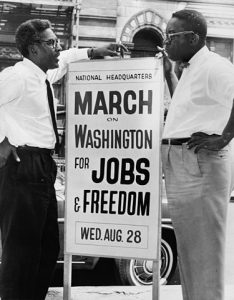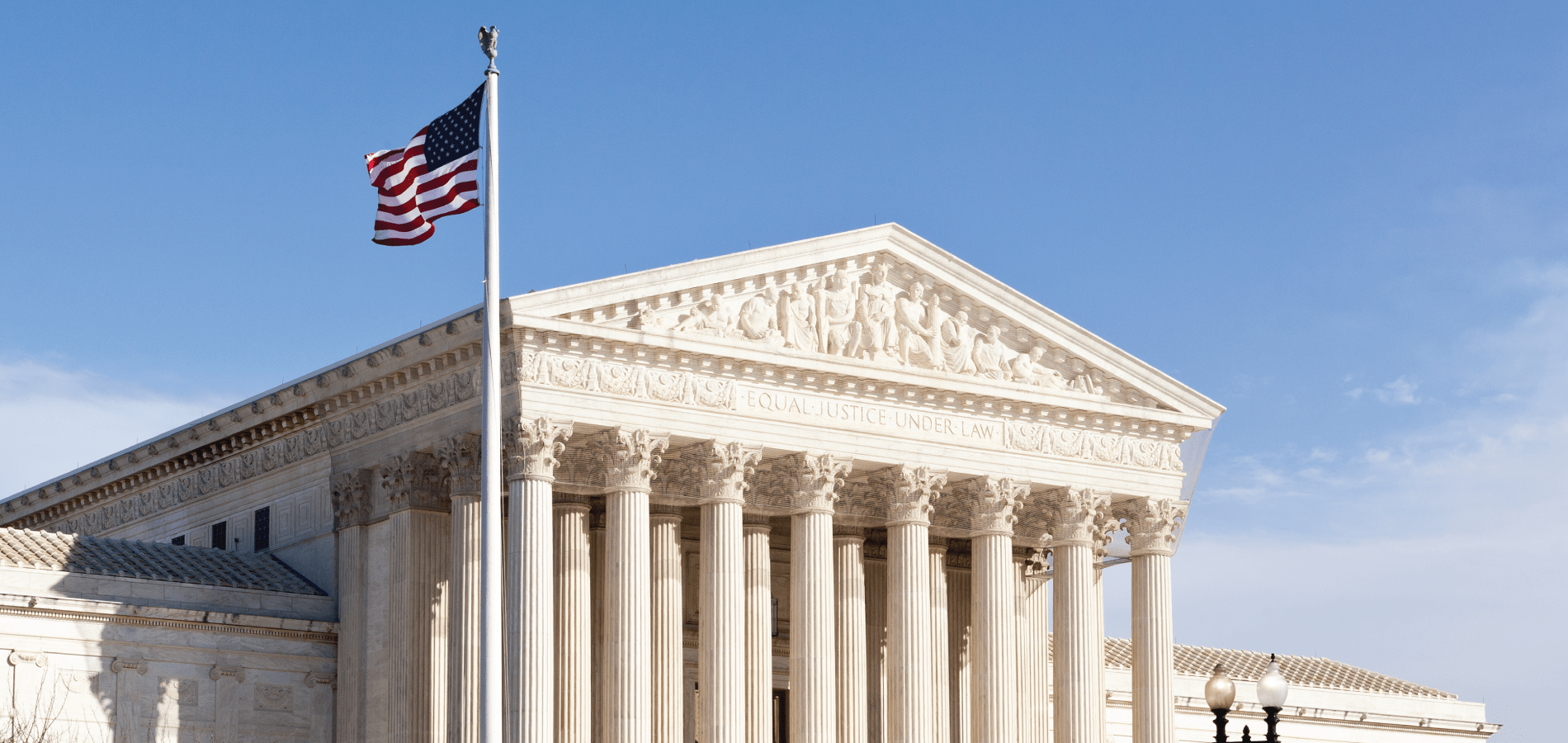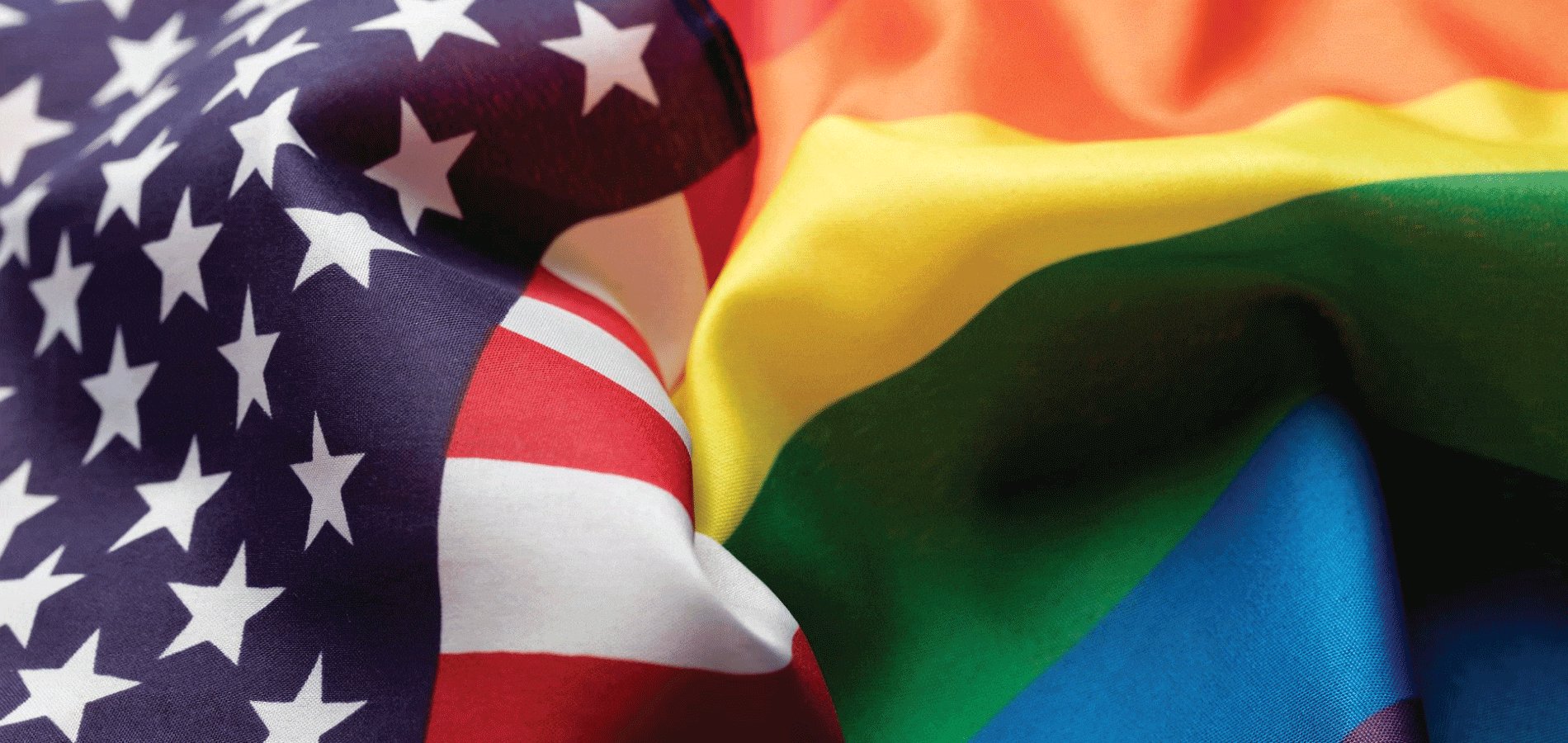The recent arrest and death of George Floyd has sparked protesters against police brutality to flood the streets demanding change. With more than 450 protests occurring in towns and cities of the United States and across three continents, some are calling this the biggest civil rights movement yet. Join us as we explore past civil rights movements in U.S. history, and what changes have occurred as a result.
Timeline of Events
The official civil rights movement began in the late 1940s as a push to gain legal equality and the enforcement of civil rights for African Americans. This movement achieved equal rights legislation, but not without its challenges. Here are a few of the major events that shaped the civil rights movement.
End of Segregation in Armed Services
On July 26, 1948, President Harry S. Truman issued Executive Order 9981, which ended segregation in the Armed Services. Prior to this order, African Americans would have to wait four years before they could begin combat training, whereas white Americans only had to wait a few months to qualify. In 1945 a survey of 250 white officers showed that black soldiers performed well in combat and got along well with white soldiers. The next year, it was proposed to end discrimination and implement a new policy.
It is hereby declared to be the policy of the President that there shall be equality of treatment and opportunity for all persons in the armed services without regard to race, color, religion, or national origin.”
Brown V. Board of Education
In the landmark U.S. Supreme Court case Brown v. Board of Education, the Court ruled on May 17, 1954, that U.S. state laws establishing racial segregation in public schools were unconstitutional. The case emerged as a result of a public school district in Kansas that refused to enroll the daughter of a black resident, Oliver Brown, at the closest school to their home. Instead, the district required her to ride a segregated bus to a black elementary school further away. This decision overturned Plessy v. Ferguson and became a model for future litigation cases.
Death of Emmett Louis Till
On August 28, 1955, a 14-year old African American boy named Emmett Louis Till was kidnapped and killed for allegedly flirting with a white woman and whistling at her earlier that day. He was shot in the head and thrown into a river, where his body was discovered three days later. Decades later, the woman disclosed that she had fabricated her encounter with Till. After his death, he became an icon of the civil rights movement, and a photo from his open casket was widely publicized. His killers were acquitted but later admitted during an interview in 1956 that they murdered Till.

Mongomery Bus Boycott
A social protest began on December 5, 1955, after an African-American woman named Rosa Parks was arrested for refusing to give up her seat to a white person. At the time, many African Americans were left stranded even after paying their fares, attacked, and shortchanged by bus drivers. Much of this push-back came from animosity towards blacks in reaction to the Brown v. Board ruling. After Parks’ arrest, a flyer was circulated in Montgomery’s black community requesting that all blacks refuse to ride the bus. This prompted a speech by Martin Luther King asking the same. The boycott continued until December 20, 1956, when the federal ruling Browder v. Gayle stated the Alabama and Montgomery laws that segregated buses were unconstitutional.
But the great glory of American democracy is the right to protest for right. We are not wrong in what we are doing. If we are wrong, the Supreme Court of this nation is wrong. If we are wrong, the Constitution of the United States is wrong.”
Little Rock Nine
As a result of Brown v. Board, a plan to gradually integrate black students into all-white schools was in place to begin in Fall 1957. The National Association for the Advancement of Colored People (NAACP) registered nine black students to attend Little Rock Central High. Segregationalist councils threatened to hold protests blocking the black students from entering the school that September. The Governor deployed the National Guard in support of these protests. Finally, President Dwight D. Eisenhower issued Executive Order No. 10730 and ordered the U.S. Army to step in. By the end of the month, the nine students were admitted into the school, but still faced physical and verbal abuse from the white students.
Freedom Rides
On May 4, 1961, an interracial group of activists, including seven African Americans and six whites, boarded two buses in Washington D.C. bound for New Orleans. Their goal was to test the Supreme Court’s ruling of Boynton v. Virginia which prohibited segregation in interstate travel facilities, including buses and railway systems, and to provoke the federal government to enforce the decision. On their journey, the tires on a bus were slashed, one bus was bombed, and the riders were beaten. Some of the original riders were arrested but were shortly taken over by a new group of freedom riders. On May 29, U.S. Attorney General Robert F. Kennedy ordered the Interstate Commerce Commission to enforce bans on segregation more strictly.
March on Washington
On August 28, 1963, more than 200,000 people from across the nation joined Martin Luther King Jr. for what is known as The Great March on Washington. It was organized to advocate for the civil and economic rights of African Americans, who were still facing discrimination from businesses and governments. Additionally, interracial marriage was banned in 21 states. With several demonstrations and marches occurring across the U.S., this march’s importance was underscored as it fell on the anniversary of Abraham Lincoln’s signing of the Emancipation Proclamation. This is where Martin Luther King Jr. delivered his “I Have a Dream” speech. This march is credited with helping pass the Civil Rights Act of 1964.

Civil Rights Act of 1964
Following the March on Washington, the organizers visited President John F. Kennedy to discuss the civil rights bill. Their goal was to persuade Kennedy to add a provision to his bill that would ban discriminatory practices by all federal agencies, unions, and private companies. After Kennedy was assassinated, President Lyndon B. Johnson pushed the bill forward, and it was finally signed into law on July 2, 1964. The Civil Rights Act of 1964 outlaws discrimination based on race, color, religion, sex, or national origin. It also prohibits racial segregation in schools, employment, and public accommodations, as well as unequal voter registration requirements.
Interracial Marriage
In 1967, the landmark Supreme Court case of Loving v. Virginia ruled that banning interracial marriage violated the Equal Protection and Due Process Clauses of the Fourteenth Amendment to the U.S. Constitution. The case stemmed from the arrest of Mildred Loving, a woman of color, and her white husband Richard Loving. Their marriage violated Virginia’s Integrity Act of 1924 that banned interracial marriages. This case was cited as precedent in the 2015 ruling on Obergefell v. Hodges, which required all 50 states to perform and recognize marriages of same-sex couples.
Fair Housing Act and Hate Crimes
After the civil unrest following the assassination of Martin Luther King Jr., President Lyndon B. Johnson urged the passage of the Fair Housing Act. While the Civil Rights Act of 1866 prohibited discrimination in housing, there were no federal enforcement provisions. Enacted on April 11, 1968, the Civil Rights Act of 1968 further prohibited discrimination concerning the sale, rental, and financing of housing based on race, religion, and national origin. It also calls for fines and/or imprisonment for anyone who “willingly injures, intimidates, or interferes with another person, or attempts to do so, by force because of the other person’s race, color, religion or national origin” while the person attempts to engage in activities such as attending school, patronizing a public facility, applying for employment, or acting as a juror.
Black Lives Matter Movement
A new civil rights movement emerged in 2013 when the hashtag #BlackLivesMatter went viral on social media following the acquittal of George Zimmerman, a man who fatally shot Trayvon Martin, a 17-year old African American in 2012. The Black Lives Matter movement went national in 2014 with street protests following the deaths of two African Americans: Michael Brown in St. Louis and Eric Garner in New York City. With the arrest of George Floyd, the movement has returned to national headlines this year, while also receiving international attention.
This global organization, found in the U.S., U.K., and Canada, advocates for non-violent civil disobedience protests against incidents of police brutality against African-American people. Its mission is to eradicate white supremacy and build local power to intervene in violence inflicted on Black communities by the state and vigilantes. It also voices support for LGBTQ activism, feminism, immigration reform, and economic justice.

Protesters are demanding change, and that’s just what they’re getting. Here is a quick rundown of some changes that have occurred as a direct result of the ongoing Black Lives Matter movement.
- Derek Chauvin, the police officer arrested for kneeling on George Floyd’s neck was charged with third-degree murder and later upgraded to second-degree murder.
- Three additional police officers present at George Floyd’s arrest have been charged with aiding and abetting second-degree murder.
- An officer involved in the fatal shooting of a 26-year old Black woman Breonna Taylor was fired three months after her death. Two other officers were placed on administrative leave. She was shot in her home eight times during an alleged drug raid, but no drugs were found in the house. The raid also took place after the suspected drug dealer was in custody.
- Minnesota City Council vowed to defund and dismantle the city’s police department.
- New York City Mayor Bill de Blasio pledged to defund the police and shift funds to youth and social services.
- Officials in Washington, D.C., California, Nevada, and Texas have banned chokeholds and any other airway-restricting techniques.
- Democrats in Congress revealed the Justice in Policing Act 2020 that bans chokeholds and forces officers to use body and dashboard cameras.
- Confederate and slavery-linked statues have been removed or vandalized across the world.
- The reality show Cops was removed by Paramount Network.
- The Grammys announced they would no longer use the word “urban” to describe Black music.
- Nike’s “Just Do It” ad was updated to “For Once, Don’t Do It” in response to police brutality.
- Bank of America pledged $1 billion over four years to communities of color and minority-owned businesses.
- The 87-year old football team, Washington Redskins, has announced they are removing their name and logo due to its racial connotations.
COMING SOON: New Civil Rights Database in HeinOnline
Amidst the current civil rights movement happening in the U.S., we’re releasing a new Civil Rights database in the upcoming months. In the meantime, stay informed about this hot topic by researching in HeinOnline. Check out these two blog posts that will aid your research efforts!
Don’t Miss Out
To keep up with current events and how to research hot topics in HeinOnline, be sure to subscribe to our blog! With a click of a button, you can have material just like this delivered directly to your inbox. We promise you won’t be disappointed.



